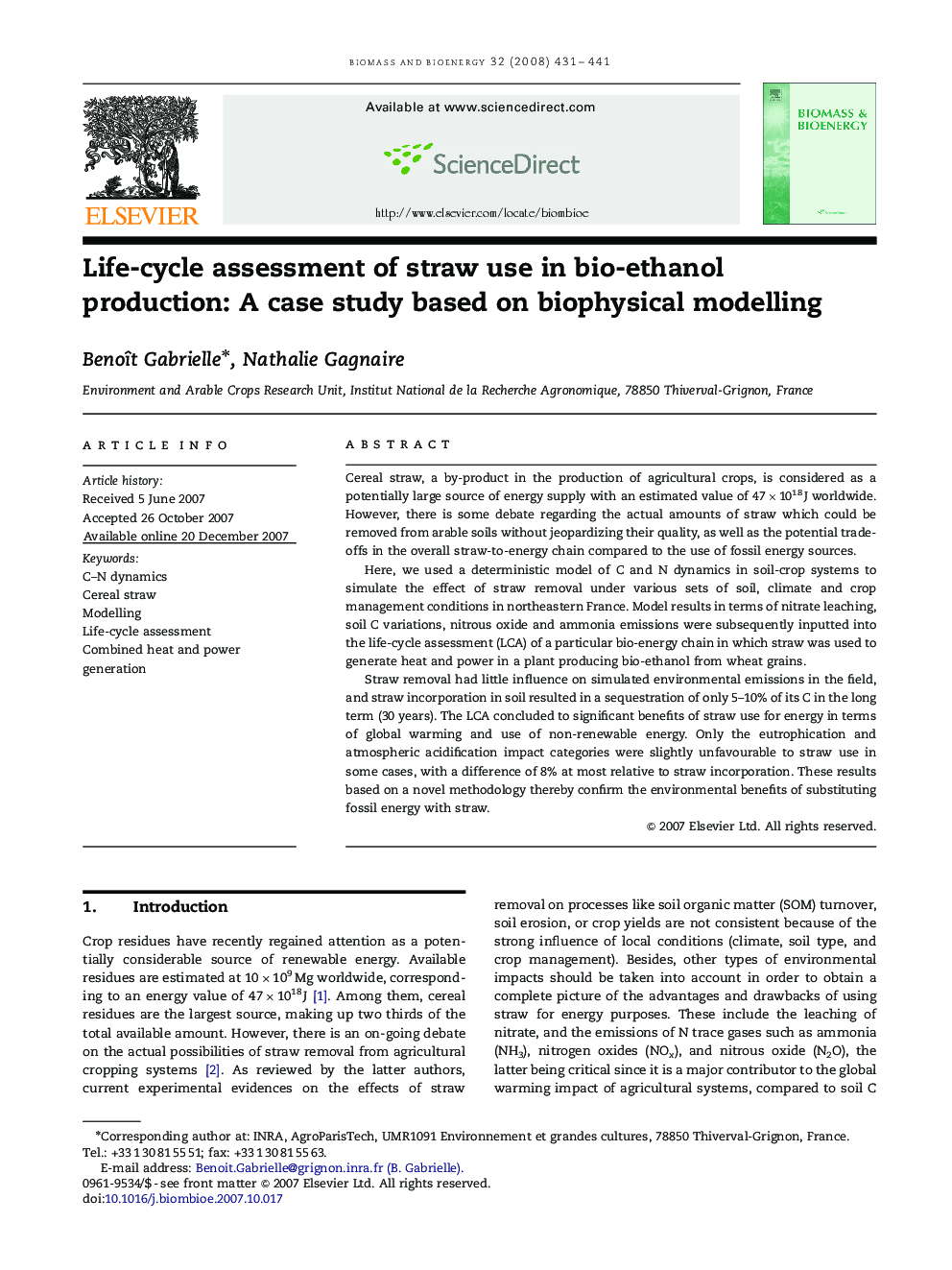| Article ID | Journal | Published Year | Pages | File Type |
|---|---|---|---|---|
| 678619 | Biomass and Bioenergy | 2008 | 11 Pages |
Cereal straw, a by-product in the production of agricultural crops, is considered as a potentially large source of energy supply with an estimated value of 47×1018 J worldwide. However, there is some debate regarding the actual amounts of straw which could be removed from arable soils without jeopardizing their quality, as well as the potential trade-offs in the overall straw-to-energy chain compared to the use of fossil energy sources.Here, we used a deterministic model of C and N dynamics in soil-crop systems to simulate the effect of straw removal under various sets of soil, climate and crop management conditions in northeastern France. Model results in terms of nitrate leaching, soil C variations, nitrous oxide and ammonia emissions were subsequently inputted into the life-cycle assessment (LCA) of a particular bio-energy chain in which straw was used to generate heat and power in a plant producing bio-ethanol from wheat grains.Straw removal had little influence on simulated environmental emissions in the field, and straw incorporation in soil resulted in a sequestration of only 5–10% of its C in the long term (30 years). The LCA concluded to significant benefits of straw use for energy in terms of global warming and use of non-renewable energy. Only the eutrophication and atmospheric acidification impact categories were slightly unfavourable to straw use in some cases, with a difference of 8% at most relative to straw incorporation. These results based on a novel methodology thereby confirm the environmental benefits of substituting fossil energy with straw.
